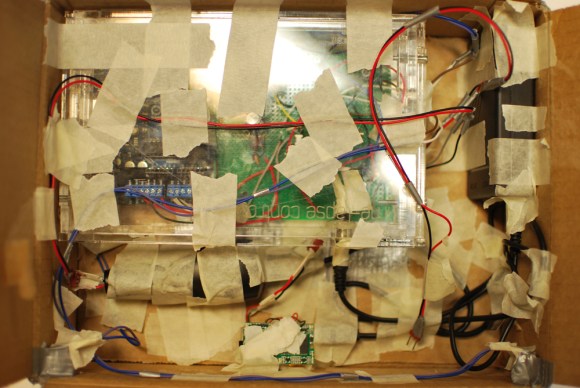
Even if your band hasn’t made it big yet it’s still a lot of fun to put on a great show. This hack will help you add lighting effects to performances without having to shell out for a lighting technician. [Phil] put together a hack that lets you trigger the lights by setting a volume threshold with a pedal switch.
After reading about the hack that adds an EQ display for a pedal board he got the idea to convert the concept as control hardware instead of just for feedback. Just like the visualization project he uses an MSGEQ7 chip which takes care of the audio analysis. He’s using this for electric guitar so he only monitors three or four of the outputs using an Arduino. He built the hardware into a foot pedal by mounting a momentary push button on the lid of the enclosure. Stepping on the button causes the Arduino to save the the current audio level. Whenever it reaches that threshold again it will switch on a mains relay to drive an outlet. In this case a strobe light turns on when he starts to rock out, which explains the bizarre image above. You can get a better feel for the theatrics by watching the clip after the break.












Recent comments